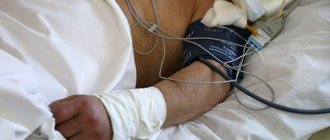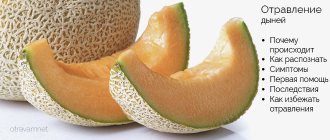Crayfish meat is considered a delicacy. It has a delicate, slightly sweet taste, is also rich in vitamins and microelements and is perfect for those who are watching their weight, as it is practically devoid of fat.
Crayfish live in running water, are eaten fresh (they are boiled while still alive) - it would seem difficult to get poisoned by them. However, this happens and is not so rare.
Source: depositphotos.com
Some facts about crayfish
Crayfish are gray-green in color and live in fresh water bodies. They feed on algae, coastal grasses, insects, and worms. People eat only the bellies of crayfish, calling them “crawfish necks” and claws.
Crayfish can get to the table by catching them in reservoirs or through sale from farms where they are bred. The best time to catch crayfish is in early spring.
Crayfish are usually prepared by boiling for 10 minutes. When they are placed in a pot of boiling water, the color of the arthropods very quickly turns red. It is not difficult to explain this transformation of boiled crayfish: the whole point is that in the shell of the crayfish there is a protein that binds this red pigment. When exposed to high temperatures, the protein is destroyed and the pigment becomes visible.
How to understand that poisoning has occurred
Determining intoxication is not always easy. To do this, you need to know how long it takes for poisoning to occur and what symptoms it is accompanied by.
Having been poisoned by low-quality boiled crayfish, a person will feel unwell quickly, after just a few hours, and the deterioration in health appears suddenly. This is indicated by the following signs:
- temperature increase;
- diarrhea;
- nausea and vomiting;
- paroxysmal pain in the abdomen (mainly in its upper parts - epigastrium);
- headaches, weakness.
After poisoning by crayfish infected with the parasite, symptoms appear that indicate the development of enteritis. Moreover, this will not be noticeable immediately: sometimes the first signs make themselves felt even after 2 weeks, when a person, after time, no longer connects the fact of eating crayfish with poisoning. But you need to be wary if the following symptoms appear for seemingly no reason:
- nausea and vomiting;
- bloating;
- frequent loose stools.
Causes
You can be poisoned by crayfish for the following possible reasons:
- food poisoning by infections caused by violation of storage, transportation, preparation standards,
- long stay of dead crayfish in the heat, and, as a result, active reproduction of harmful microorganisms: staphylococci, E. coli, Proteus, clostridia, Klebsiella, Shigella, Salmonella, etc.,
- poisoning with aluminum or zinc as a result of storing the product in a harmful container,
- carriage of parasites by crayfish that cause the disease paragonimiasis,
- accumulation of toxins, radionuclides, heavy metals and other harmful substances from their habitat by crayfish in their bodies,
- allergic reaction to crustacean protein.
As for paragonimiasis, the disease is caused by a 1 cm long flatworm. It affects the lungs, liver, brain, as well as subcutaneous and muscle tissue. The larvae of this pulmonary parasite can travel through the blood into the lungs and brain and, if left untreated, can cause toxic hepatitis, inflammation of the peritoneum, cysts, pneumothorax, pulmonary hemorrhages, and death.
Food allergies or individual intolerances
Cancers can become a source of pathogens that affect the gastrointestinal tract (see Intestinal poisoning), causing symptoms such as nausea, vomiting, loose stools, and abdominal pain. Body temperature often rises, manifestations of intoxication increase - pain in the head, joints, muscles.
The condition is dangerous due to the development of dehydration due to loss of fluid and electrolytes through stool and vomiting. The cause is infection: staphylococci, Escherichia coli, Proteus, Clostridia, Klebsiella, Shigella, Salmonella, which grow well on a protein substrate at high temperatures and improper storage.
If the symptoms described above occur, you should consult an infectious disease specialist to determine the nature of the infection and appropriate treatment. To stop profuse diarrhea, sorbents are used - activated carbon, clay, Gmecta, Enterosgel. It is important to eliminate dehydration by drinking solutions containing mineral salts and sugars: Citroglucosolan, Regidron, Gastrolit. They are drunk separately from sorbents.
In the hospital, Ringer's solution and other crystalloids are administered intravenously to correct dehydration. If the cause of crayfish poisoning is established, the infection is killed with antibiotics.
Crustacean protein is a common allergen. It can cause hypersensitivity reactions of varying intensity, ranging from itchy skin rashes to deadly anaphylactic shock.
Symptoms of food allergies:
- Skin spots and itching.
- Swelling of the nasopharynx and larynx, coughing and difficulty breathing - possible suffocation.
- Loss of consciousness.
People suffering from crustacean protein intolerance usually know their tendency to this condition and try not to eat them. However, if manifestations of an allergic reaction occur, Quincke's edema (angioneurosis and spasm of the windpipe) can develop at lightning speed, which is dangerous due to suffocation and death.
Symptoms
Toxins released by harmful microorganisms penetrate the bloodstream and spread throughout the body, leading to general intoxication. Symptoms of crayfish poisoning may include the following:
- nausea, vomiting,
- diarrhea and abdominal pain, watery diarrhea,
- weakness, headache,
- bloating, flatulence,
- joint and muscle pain,
- from itching and allergic skin rashes to anaphylaxis in case of individual intolerance to the product,
- increase in body temperature,
- impairment of consciousness due to severe intoxication.
Caviar poisoning
If poisoning with zinc or aluminum occurs, signs of intoxication will also appear: anemia, disturbances in the gastrointestinal tract, liver, kidneys, heart.
Symptoms often depend on the type of poisoning agent, the volume of the harmful product eaten and on the age and individual characteristics of the body. The first symptoms of malaise usually occur in the first few hours after eating.
With paragonimiasis, the asymptomatic period lasts much longer, often even several weeks.
At the first signs of crayfish poisoning, you must call a doctor and begin first aid.
Signs of crayfish intoxication
If a person is poisoned by crayfish, the following symptoms appear:
- taste of seafood in the mouth. The patient may also experience belching that tastes like crayfish meat;
- nausea and vomiting. In this case, there should be particles of cancerous meat in the stool;
- aversion to the smell of seafood. If the poisoning is mild, then after treating the poisoning the person will begin to like the smell of crayfish again. But if intoxication occurs with complications, the poisoning was serious, an aversion to seafood may remain for life ;
- Stomach hurts, growls, loss of appetite. The patient begins to diarrhea, and a burning sensation appears in the anal area. In some cases, it is not diarrhea that is observed, but constipation, which is associated with dehydration;
- the temperature rises, the head hurts, there is general weakness, the pulse quickens.
In this case, the manifestation of intoxication depends on the amount of toxins entering the body, as well as on individual characteristics. In mild cases of poisoning, a person may only feel weakness, and other symptoms do not appear. In addition, symptoms of poisoning may not appear immediately, but after several hours.
When poisoning is caused by bacteria that are part of the crayfish, nausea, diarrhea, and severe pain in the abdominal area appear . This is dangerous due to dehydration of the body, so treatment measures should begin immediately after the first symptoms appear. The reason for this intoxication is the entry into the gastrointestinal tract of infections - E. coli, staphylococcus and others.
It must be borne in mind that signs of poisoning do not necessarily indicate intoxication. For example, similar symptoms appear in the case of paragonimiasis. This is an infection with a parasite - the pulmonary fluke. It affects not only the lungs, but also the liver and brain. The disease is of two types: abdominal and pulmonary. In the first case, the signs of infection are completely similar to the symptoms of intoxication. Inflammation of the liver is also added to these. But in the second case, lung function is disrupted, shortness of breath appears, and the temperature rises to 40 degrees.
First aid
What to do if you are poisoned by crayfish? You need to follow these simple steps as soon as possible:
- It is necessary to pay attention to the symptoms and condition of the patient. If it does not cause concern and there is a mild form of poisoning, then you do not need to consult a doctor, but cope with the disease yourself. Otherwise, call an ambulance,
- The next step is to rinse the stomach. To do this, you need to drink a lot of water and induce vomiting. Repeat the steps until there is no food in the effluent water. The procedure is relevant only for the first half of the day after eating harmful food. The sooner, the fewer toxins will enter the body and the easier it will be to cope with intoxication, this will help to slightly improve the patient’s condition and speed up recovery,
- Take the sorbents available at home (activated carbon, Smecta, Enterosgel, Polysorb),
- If signs of dehydration appear (decreased sweat and urine, dry mouth, thirst, decreased blood pressure, confusion), you can take Regidron and Gastrolit separately with sorbents to restore the body’s water-electrolyte balance,
Help after poisoning also includes frequent drinking and bedtime.
If there is a severe allergic reaction or severe crayfish poisoning, you must urgently call an ambulance.
How is poisoning treated?
If there is a clear deterioration in the condition after poisoning, one should not leave things to chance. Delay or failure to provide assistance can cost the victim not only serious health problems, but sometimes even life.
Crayfish meat poisoning needs to be treated comprehensively. Since symptoms and treatment are always closely interrelated, the doctor will carefully examine the cause and degree of poisoning, and prescribe the appropriate procedures and medications:
- professional gastric lavage with a probe;
- drugs that restore water and electrolyte balance;
- antihistamines (if an allergic reaction occurs);
- antibiotics (for bacterial poisoning);
- antiparasitic drugs for paragonimiasis;
- sorbents for detoxification;
- a diet that excludes protein from the diet.
Treatment
If you notice symptoms of crayfish poisoning, you should consult an infectious disease specialist to find out the nature of the infection and carry out the correct treatment.
In some cases, antibiotic therapy may be necessary. An antibiotic should be prescribed only after laboratory tests of vomit or stool.
Paragonimiasis must be treated with antiparasitic drugs.
In case of an allergic reaction to crayfish, it is necessary to take antihistamines and subsequently stop using the product.
The patient must follow a diet as an essential part of the treatment of any poisoning. You can't eat anything until the vomiting goes away. Only frequent drinking is recommended: still mineral or boiled water, teas, herbal infusions. Then vegetable broths, water-based porridges, lean meats, baked apples, etc. are slowly introduced.
Hydrogen sulfide poisoning
The dangers of boiled crayfish
Despite the usefulness, deliciousness and nutrients of crustacean meat, consuming it in some cases can lead to an unfavorable outcome.
Death after eating crayfish is quite rare, of course, but if they are not prepared correctly, the unexpected can happen.
- The easiest outcome of poisoning is an allergy to the meat eaten. Despite the seemingly safe composition of the product, allergic rashes are often observed, especially in children;
- A similar illness can occur due to low-quality meat. Proper cooking involves boiling the crayfish while they are still alive; if you cook crayfish that are already dead, there is a high probability that their meat has already been spoiled;
- Crayfish meat spoils very quickly, so after cooking it must be consumed as quickly as possible to prevent the development of foodborne infections;
- The cooked crayfish should be placed in a washed glass container. This is a prerequisite, since aluminum and other metal containers oxidize the meat, thereby accelerating the infection process;
- This product is not recommended for use by people who have problems with the thyroid gland.
Canned food poisoning
Prevention
Preventative measures for crayfish poisoning:
- to prevent infection, catch crayfish yourself, especially in known environmentally friendly places,
- after catching, do not store crayfish in an aluminum or galvanized bucket; it is better to choose ceramics, glass or plastic materials,
- Before cooking, rinse the crayfish well,
- Before cooking, store live crayfish in water in a dark, cool place for no more than 3 days, often changing the water and feeding them with meat, fish, grated carrots, and boiled potatoes. It is important that they do not die or deteriorate. When throwing crayfish into boiling water, you need to check whether each one is alive. Even 1 dead crayfish can ruin the whole dish,
- eat only fresh, just boiled crayfish,
- follow the rules for storing perishable products: boiled crayfish can only be stored in the refrigerator for a few hours,
- follow the rules for cooking crayfish: cook while still alive for at least 10 minutes, the color of the finished product should be red, the tail should be pressed to the belly, and the shell should be easily separated from the pulp,
- When ordering crayfish in a restaurant, pay attention to the fact that their tails are pressed to the body. This sign will indicate that the cancer was alive immediately before cooking,
- Do not offer crustacean meat to children, because allergic reactions to this product are common among them, as well as people with thyroid diseases due to the high risk of exacerbations,
- Do not try large quantities of crayfish if you are allergic to seafood, because... There is a high probability of cross-allergy to this product.
Thus, crayfish can be very dangerous to human health and life. If you take all precautions, you can avoid negative consequences.
Useful properties of boiled crayfish
Everyone knows that this delicacy is very tasty and healthy, so not only adults, but also children love to eat it.
Even the fact that a small amount of meat has to be obtained with a lot of effort, this does not stop those who like to feast on it, since it is not only tender and pleasant to the taste, but also dietary.
- The product contains a minimum amount of calories (78-90 per 100 grams);
- Crayfish meat is rich in B vitamins, which have a beneficial effect on the digestion, cardiovascular, and nervous systems;
- In addition to protein, crustaceans contain a complex of vitamins D, C, E, K, as well as microelements such as potassium, calcium, magnesium, fluorine, chromium, iron, sulfur, which contribute to the normal functioning of internal organs and systems.
If dietary crayfish meat is so beneficial, why do poisonings occur with it, and why does this happen?
Milk poisoning
How to deliciously cook crayfish in milk?
Garlic has chelating properties, which is the ability to bind toxins, including, for example, the potentially carcinogenic cadmium from cigarette smoke, and remove them from the body. It also activates white blood cells, which engulf and destroy cancer cells. One of the most common types of cancer is stomach cancer, but regular consumption of garlic and onions reduces the likelihood of this disease. Garlic also serves as a source of sulfur, which is necessary for the liver to perform its detoxifying function.
Onions act in a similar way, although to a lesser extent. Both garlic and onions contain allicin, a sulfur-containing substance that has a powerful detoxifying effect. Considering that the liver is a universal organ that cleanses our body of any carcinogens and pathogens, the importance of onions and garlic cannot be overestimated.
Crayfish cooked with garlic
If you have tried almost all the classic recipes for cooking crayfish and you want something new, then try boiling these tasty arthropods with the addition of a lot of garlic. It will give the crayfish meat a slight spice and make it very aromatic.
Preparation:
- Place the crayfish in a basin of clean water and wait until they spontaneously get rid of silt and soil
- Boil 4 liters of purified water, add 4 tbsp. l salt, black pepper, fresh dill and 20 cloves of garlic
- Make a concentrated broth from these ingredients and let it brew
- Then bring it back to a boil and drop the live crayfish into it.
- When the liquid begins to bubble intensely, reduce the heat to low and simmer for 30 minutes.
- Place the finished crayfish on a plate with ice and garnish with olives and olives.
Crayfish soaked in milk
This recipe will appeal to gourmets who love unexpected experiments. Try soaking the crayfish in milk first, and then boil them in the standard way.
The fat present in the milk will make the meat of these river inhabitants so tender that it can be eaten with the lips.
Recipe:
- Prepare 2.5 kg of crayfish and fill them with 3 liters of full-fat milk (you can use farm milk)
- Let them sit in the milky liquid for 2-3 hours
- Then pour the milk into the sink and rinse them under cold running water
- Place clean crayfish in a broth of water, dill, parsley, carrots, salt and pepper
- Boil them for 20 minutes and then cool them quickly and serve.
Diet of cancer patients
A person suffering from cancer intoxication should eat well, but not overeat. Fractional meals with sufficient vitamins and minerals in the diet and tracking the amount of carbohydrates, fats and protein are encouraged.
The patient's menu is dominated by dairy products, as they best help cleanse the body of toxins. Lean meat and fish, as well as protein shakes, will help you regain strength and get stronger.
However, a cancer patient should not indulge in fatty and heavy foods. Portions should be small, and the patient can eat up to four times a day, especially at the very beginning of treatment.
How long should you cook small and large crayfish?
Optimal time for boiling crayfish
Crayfish come in different sizes and depending on this, their cooking time increases. Ideally, of course, it is best to cook individuals of the same size. This way you can be sure that the appetizer is prepared perfectly and there will be no undercooked or overcooked arthropod on your table.
But if it turns out that there are mollusks of different sizes on your kuna, then just add their broth starting with the largest ones.
Cooking time:
- Small ones - 10-15 minutes
- Average - 15-25 minutes
- Large - 30-40 minutes
How to cook crayfish with caviar?
Crayfish with caviar
Although some people argue that crayfish caviar does not have any special taste, if it is prepared correctly, it will even be worthy of a holiday table.
The best part is that if you cook crayfish with caviar, you will get not one, but two delicious dishes at once. After cooking, you will take out the caviar, season it with lemon juice and pepper and serve it as a separate appetizer with beer or any other alcoholic drinks.
Cooking crayfish and caviar:
- Prepare broth from water, salt, pepper, bay leaf and dry dill.
- Bring it to a boil and add the peeled and washed crayfish.
- As soon as they turn red, immediately remove them and place them on a chilled plate.
- If you plan to serve them with caviar, then immediately bring the appetizer to your guests
- If you want to serve caviar as a separate dish, then first remove it using a small spoon into a separate bowl
- Then clean it of films and bring it to taste with spices
- Serve crayfish and caviar slightly chilled
Diagnosis of cancer intoxication
The diagnosis is made taking into account the medical history, complaints, objective examination data and the results of additional studies. The decisive role in determining the cause of cancer intoxication is played by identifying the underlying pathology. If the clinical picture is characteristic and there is no established diagnosis of cancer, patients with suspected cancer intoxication are prescribed a comprehensive examination, which includes general blood and urine tests, biochemical blood test, blood test for tumor markers, chest x-ray, scintigraphy of skeletal bones, ultrasound of the abdominal cavity , pelvic ultrasound, gynecological examination and other studies. The examination plan is determined individually.
When an oncological disease has already been diagnosed, an assessment of the severity of cancer intoxication is required to determine treatment tactics (drawing up a chemotherapy plan, deciding on surgical intervention, selecting symptomatic drugs, etc.). To assess the severity of cancer intoxication, standard blood indicators are used: the level of urea, creatinine and C-reactive protein, the reactive response of neutrophils, the leukocyte index of intoxication, etc. Along with the listed indicators, data on the condition of various organs and systems of the patient with cancer intoxication may be required, obtained during ECG, urine tests, blood tests for hormones and other studies.
Chemical poisoning
Crayfish, due to their feeding method (filtration), accumulate various substances found in the reservoir. Such compounds can be heavy metals, waste from factories and power plants (cesium, dioxins).
Symptoms of poisoning: pain in the head, muscles and bones, fever, gastrointestinal upset in the form of diarrhea, bloating. In this case, there is no need to hesitate to consult a doctor. To reduce intoxication, sorbents (smecta, polyphepan) are used. In a hospital setting, forced diuresis and various forms of dialysis (blood, peritoneal) can be used.
To enjoy it without consequences, you must follow the rules for storing and cooking this delicate delicacy. At the first signs of poisoning, you should consult a doctor if your family has been poisoned by crayfish.
Aluminum or zinc poisoning
If, after catching, the crayfish were in an aluminum or galvanized bucket, then they may become infected with metal ions (see Zinc poisoning), which disrupt the functions of the human body. It is advisable to use enamel, glass or plastic containers to store them while catching other individuals. In case of poisoning with zinc and aluminum, serious disruptions in the functioning of the kidneys, liver, heart and other important organs are possible. Anemia and gastrointestinal disorders develop.










